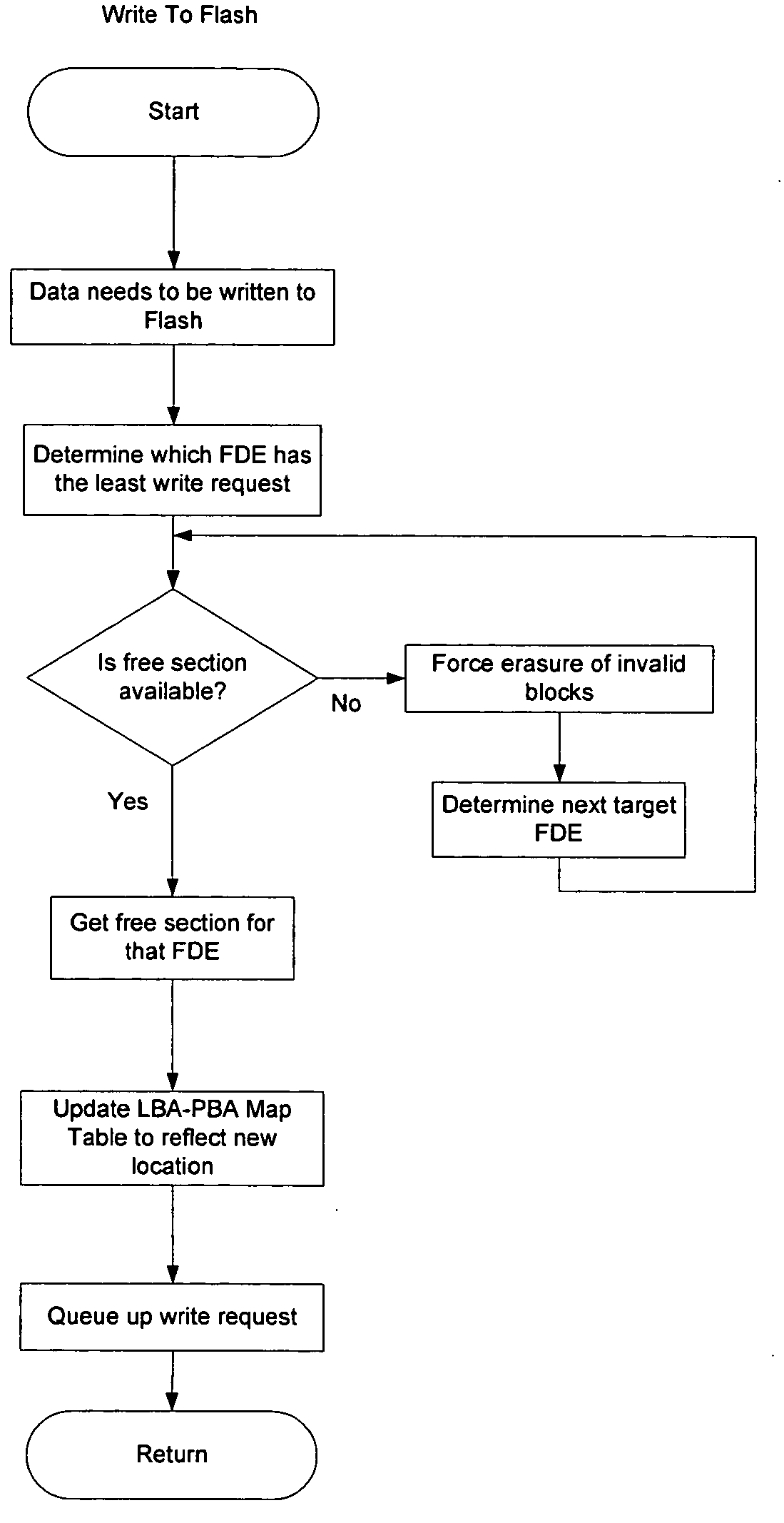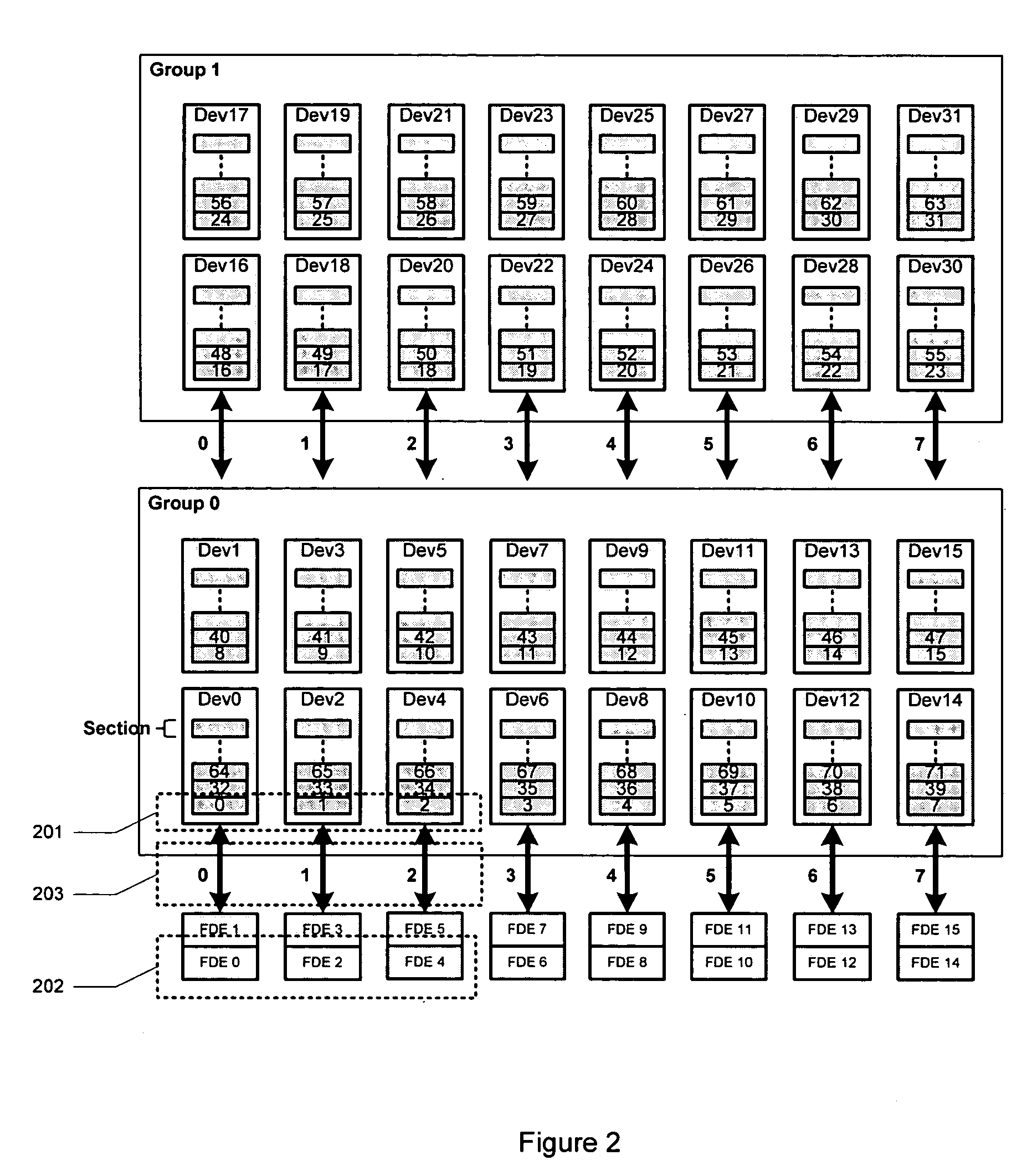Optimized placement policy for solid state storage devices
a technology of solid-state storage and placement policy, which is applied in the field of computer data storage systems, can solve the problems of slow access time, reliability problems, and mechanical hard drives suffering in certain areas
- Summary
- Abstract
- Description
- Claims
- Application Information
AI Technical Summary
Benefits of technology
Problems solved by technology
Method used
Image
Examples
Embodiment Construction
[0025]FIG. 1 shows an exemplary architecture that accommodates a very large number of flash arrays to achieve large capacities according to an embodiment of the present invention. The system comprises a number of Flash DMA Engines (FDEs) 101. A Flash DMA Engine (FDE) is basically an intelligent DMA controller that facilitates high speed data transfers to / from a group of flash memory devices. The system also contains a set of Flash Buses 102, which is a bus interface used by the FDE to connect to the flash memory devices. To increase capacity, a number of expansion boards 103 can be added. An expansion board is essentially a memory board that consists of a pool of flash memory devices for additional storage and a Flash Buffer Controller 104 for communication to the Flash DMA Engine. The Flash Buffer Controller is a controller that drives the Flash Bus and translates the command signals from the FDEs into native flash commands that can be understood by the target flash chip. The numbe...
PUM
 Login to View More
Login to View More Abstract
Description
Claims
Application Information
 Login to View More
Login to View More - R&D
- Intellectual Property
- Life Sciences
- Materials
- Tech Scout
- Unparalleled Data Quality
- Higher Quality Content
- 60% Fewer Hallucinations
Browse by: Latest US Patents, China's latest patents, Technical Efficacy Thesaurus, Application Domain, Technology Topic, Popular Technical Reports.
© 2025 PatSnap. All rights reserved.Legal|Privacy policy|Modern Slavery Act Transparency Statement|Sitemap|About US| Contact US: help@patsnap.com



